Top 5 undercover agents who infiltrated the Mob
These undercover officers took big risks to help bring down crime bosses
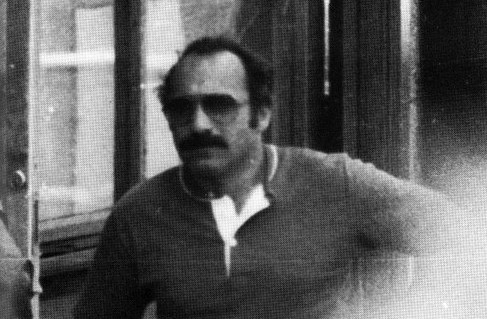
In law enforcement, working as an undercover officer carries the high risk of discovery by criminal suspects, leading to violence, torture and death. But the rewards can be huge, with wire recordings and eyewitness testimony that can result in arrests and convictions. A trained officer knows how to strategize, win the confidence of their targets and get them to reveal what’s needed to build a case to take to trial. It requires an unusual kind of person, able to work under stress, stay focused, pull off the character he or she is playing and be prepared to tell many lies.
What follows here is a list of five remarkable individuals whose undercover operations, despite real dangers, resulted in the convictions of leaders and associates of organized crime, over almost a century. This list leaves out many other famous undercover officers, whom we would like to recognize in the future. Perhaps because of the gravity of the investigations, and the financial resources required, all of these undercover officers worked for agencies of the U.S. government.
Michael Malone
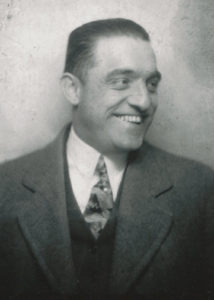
Michael Malone had all the makings of an undercover agent who would successfully infiltrate Al Capone’s Chicago gang for nearly two years. Malone, whose parents came over from Ireland, grew up in New Jersey and meshed well with its European immigrants, eventually learning to speak Gaelic, Italian, Yiddish and Greek. With his “black Irish” dark hair and skin, he resembled someone from southern Europe. After finessing his way into Capone’s inner circle in 1929, Malone proved invaluable to his superiors in the Treasury Department pursuing a tax evasion case against the Chicago crime boss. Despite the danger, Malone kept an iron will. Blowing his cover would have proved fatal. But given his skills, it didn’t happen.
While Malone kept up the charade, he delivered information that proved incriminating not only for Capone, but for his top enforcer, Frank Nitti (aka Nitto). Malone remained disguised within Capone’s bootlegging band even for a time after the feds filed tax charges against Capone, Nitti and Capone’s brother, Ralph, in 1931.
When Capone’s jury trial commenced, and the Treasury Department removed Malone from his undercover job, the agent gained a bit of respect from the embarrassed gang chief himself. In the Chicago courthouse, Malone happened to enter an elevator where Capone stood with his defense lawyers.
“The only thing that fooled me was your looks,” Capone is said as to have remarked to Malone. “You look like a Wop. You took your chances, and I took mine. I lost.”
From 1929 to 1931, Malone fed intelligence about Capone that would culminate in the historic conviction of the nation’s most notorious Mob boss. His fascinating story began after his service in World War I. With law enforcement his career goal, Malone joined the Treasury Department’s Intelligence Unit later known as the “T-Men.” Early on, in the 1920s, Malone appreciated how donning disguises brought him closer to the suspects. He posed in everyman roles such as garbage man and shoe shiner.
Elmer Irey, chief of the Intelligence Unit, had worked with undercover agent Malone on Prohibition cases. Once, Irey enlisted Malone to smash a West Coast version of “Rum Row,” rumrunners selling contraband Canadian liquor from ships off the coast of San Francisco. Malone posed as gangster from Chicago in hiding, with money to invest in illegal booze. He devised a nighttime sting operation. Agents posing as bootleggers drove speedboats out to the booze-laden mother ship and, after money changed hands, Malone fired off a flare, signaling the U.S. Coast Guard, which boarded the mother ship and arrested the astonished bootleggers.
President Herbert Hoover entered office in March 1929, a few weeks following the infamous St. Valentine’s Day Massacre in Chicago, where seven men associated with Capone’s bitter rival in bootlegging, George “Bugs” Moran, died in gunfire. Hoover conferred with Irey and urged him to compile a team of special agents to “get Capone” on tax charges. Meanwhile, another team of Prohibition Unit agents in Chicago, headed by Eliot Ness, would attack Capone on violations of federal liquor laws under the Volstead Act.
Irey appointed Special Agent Frank Wilson, Malone and several others to the get Capone team. Meanwhile, a group of wealthy business executives in Chicago, called the Secret Six, donated large sums of money for expenses to assist the feds in getting Capone. Malone used their largess to purchase some expensive clothing to look the part of a well-heeled hoodlum that Capone would envy.
Malone set about infiltrating Capone’s underworld at its core – the Lexington Hotel, where the boss and his men lived. Wearing a fancy suit, purple shirt and white hat, Malone sat in the lobby, reading newspapers for days on end. He spoke in an Italian accent, introduced himself as “Mike Lepito,” met Capone men playing craps and played the part of a mobster. He mailed letters to friends in Philadelphia, who wrote back. Capone’s guys broke into his room, noted his pricey checkered suits and silk underwear. They opened his mail from Philadelphia, read the letters written, impressively, in underworld lingo they understood. They informed Capone.
Finally, Capone sent a cohort down to the lobby to ask “Lepito” about his business in town. “Keeping quiet,” Malone replied in his Italian inflection. In the coming days, over drinks, Malone told the guy he was on the lam for burglary in Philadelphia. That got Malone invitations to play poker and trade gossip with the gang, then dinner at their hangout, the New Florence, and then to attend the birthday party Capone planned for Frank Nitti at the Lexington. Malone met Capone at Nitti’s party. The secret agent’s new acquaintances included big-shot hoods Nitti, “Machine Gun” Jack McGurn, Jake “Greasy Thumb” Guzik, Paul “The Waiter” Ricca, Murray “The Camel” Humphreys and Sam “Golf Bag” Hunt. Malone was in.
He discreetly phoned Wilson about what he’d overheard within the gang. Wilson and his aides traced signatures on bank checks while pursuing tax evasion cases against Nitti and Guzik. A federal court in Chicago convicted Guzik, who got a five-year sentence. But Nitti skipped town. Malone, assigned to find him, followed Nitti’s wife to an apartment building in Berwyn, Illinois. There, the cops nabbed Nitti, later sentenced to 18 months in prison for tax evasion.
Then the police pinched Al himself following his 1931 indictment on tax charges. “Mike Lepito” was there at the Lexington when Al Capone arrived back, triumphant about his release on $50,000 bail. Malone listened and reported to Wilson about Capone’s scheme to bribe and fix the jury in his favor. The feds moved quickly and a judge created a new list of jurors. Malone then reported Capone’s plot to hire five gunman from New York to kill four federal officials in Chicago – including Wilson. With safety measures in place, Capone ordered the gunmen to leave town.
Capone’s trial, after a judge refused to plea bargain with the Mob boss, started in October 1931. Four days afterward, Malone finally gave up the act. The news spread fast to Capone and his men. Malone had heard that Phil D’Andrea, Capone’s bodyguard, planned to bring a concealed gun into the courthouse. Malone and another agent frisked and disarmed D’Andrea, and had him arrested. A jury Capone could not fix found the boss guilty on 22 criminal counts. The judge gave him 11 years in the federal pen and a $50,000 fine, plus court costs.
Months later, in early 1932, the Intelligence Unit had Malone, Irey, Wilson and Special Agent A. P. Madden probe the kidnapping of aviator Charles Lindbergh’s son. The team’s persistence paid off within two years, with the capture (and conviction) of suspect Bruno Hauptman, who still had some of the marked currency the agents convinced Lindbergh to use as ransom money.
Malone had other notable cases. In 1933, Irey assigned him to find fugitive New York gangster Waxey Gordon, wanted for tax evasion. Malone located Gordon in a remote cottage in the Catskill Mountains. Special Prosecutor Thomas Dewey took the case, and the court put Waxey away for 10 years. A year later, Malone infiltrated Louisiana Governor Huey “Kingfish” Long’s crooked crew. After Long’s assassination, the IRS won a tax fraud conviction against Malone’s target, Long’s close aide, Seymour Weiss.
In his last undercover operation before his death, the Intelligence Unit gave Malone a large amount of cash and a Cadillac to use in Miami Beach, disguised as a rich syndicate man. He found and reported what the agency wanted – details of a coast-to-coast illegal abortion ring.
After Malone’s death in 1960, Wilson described him to a news reporter as “the best undercover agent we ever had.”
Joseph Pistone
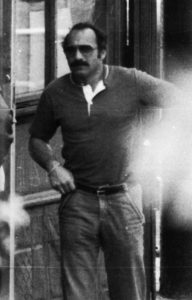
In New York City during the mid-1970s, the FBI investigated a rash of truck hijackings happening each day. The agency assigned agent Joseph “Joe” Pistone to go undercover for six months to find out where the Mob-connected thieves took the stolen cargo. His adopted name was “Donnie Brasco.” He was so effective as a wiseguy that the FBI let him keep it up. No one knew how far the investigation would lead, or what it would mean for Pistone, who started as an agent in 1969.
His experience would eventually prompt the mobsters in New York to put out a $500,000 contract for his murder, but it never happened. In the end, the evidence and trial testimony he provided in the 1980s produced 200 indictments of Mob associates and more than 100 convictions. His work decimated the Bonannos, one of New York’s five major crime families.
Pistone’s journey while undercover, impersonating a mobbed-up jewel thief, would last an incredible five years, from 1976 to 1981, during which he penetrated the upper levels of the Bonanno organization. No FBI agent had made it inside the Mob like that. The agency beforehand had to rely on informants.
Pistone took a class to learn about jewelry to make his affectation believable. In Brooklyn and Manhattan, he roamed bars and restaurants frequented by Mob types. He communicated using the street smarts he absorbed growing up as a working-class Italian-American kid in Paterson, New Jersey, where he went to Italian social clubs and encountered local hoods. Years in, he had the Bonanno circle so convinced that it moved to have him a “made” man shortly before the FBI ended his assignment.
At first he befriended low-level mobsters. He wore a wire to record conversations, and committed to memory names and license plates since taking notes would obviously raise red flags. By 1976, he’d won the trust of important Bonanno members, notably family soldier Benjamin “Lefty Guns” Ruggiero, said to have killed 26 people, and capo Dominick “Sonny Black” Napolitano. Ruggerio recommended him so that he could join the clan. Pistone’s Mob activities centered in New York and Florida, taking him away from his wife and young daughters for extended times. Pistone even had to vacation with his demanding cohorts. He moved his family members out of state for their protection.
As “Donnie Brasco,” Pistone helped Ruggerio transfer stolen goods and sell guns. He engaged in loansharking, extortion and illegal gambling. Once, while pretending to be an expert in burglar alarms, angry Mob associates intent on committing burglaries demanded he reveal the name of a mobster who would vouch for him. The FBI used an informant to quell their suspicions.
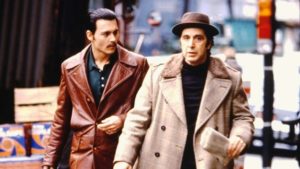
In 1981, the situation intensified again when the crime family commanded him to kill an adversary. The FBI pulled him out of the sting. It was time to start making cases, and for him to testify in open court as himself. Starting in 1982, Pistone’s testimony over the next several years in racketeering cases sent more than 100 mobsters to long prison terms. Prosecutors considered him crucial to convicting 21 defendants in the “Pizza Connection” case of pizzerias used to traffic in heroin and launder money for the Sicilian Mafia.
Pistone went into hiding and later retired from the FBI, unscathed, in 1986. In the 1990s, Salvatore “Sammy the Bull” Gravano, former underboss for the Gambino family who turned FBI informant, said the embarrassment from the “Brasco” case drove bosses in New York’s crime families to suspend the Bonanno group from its board of directors.
But Pistone couldn’t stay retired. In 1992, at age 53, he requested reinstatement with the FBI, which agreed only if he would enter the agency’s strict training class, lasting 16 weeks at its base in Quantico, Virginia. Pistone endured the rigorous course alongside recruits in their 20s. He passed and the FBI rehired him, at least until the mandatory retirement age of 57.
Pistone’s 1988 book on his undercover experiences, Donnie Brasco: My Undercover Life in the Mafia, was a bestseller. Based on the book, actor Johnny Depp portrayed Pistone in the 1997 feature film Donnie Brasco, with Al Pacino as Ruggerio.
Jack Garcia
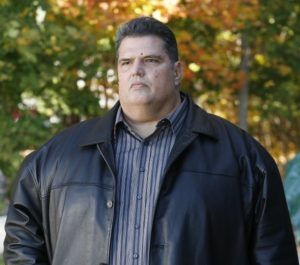
Before he succeeded in infiltrating New York’s Gambino crime family, FBI agent Joaquin “Jack” Garcia had to go school. That is, the FBI’s “mob school,” where he received an education in how to hit the ground running with veteran mobsters. His teacher was special agent Nat Parisi. First off, Parisi said, do not carry a wallet – wiseguys carry wads of currency, often bound by the kind of rubber band grocery stores use to keep broccoli together. Also, correctly pronouncing Italian food matters – as Tony Soprano might say, those long pasta shells are not “manicotti,” but “manicote.” Another valuable lesson he learned is that his Mob brethren loved compliments – his favorite one: “Where did you get those nice threads? You look like a million dollars.”
In his 26-year career as an FBI agent, Garcia took part in more than 100 undercover investigations, from Miami to New York, Atlantic City and Los Angeles, targeting mobsters, drug traffickers and corrupt politicians and cops. He participated in the highest number of undercover cases in FBI history. In many of his capers, he impersonated a mobster, using the name “Jack Falcone” (in honor of the Italian judge Giovanni Falcone, killed by the Sicilian Mafia in the 1990s). As a backstory, he told his Mob marks about having a Sicilian pedigree (actually he’s a native of Havana and grew up in the Bronx) with an expertise in stealing and fencing stolen goods, with jewelry as his specialty. Sometimes, he had to run several undercover roles at once. He took advantage of his fluency in Spanish and Italian, being careful not to mix things up when the phone rang.
In the early 2000s, the FBI chose Garcia for what would be the most fruitful infiltration of an organized crime family since Joe Pistone’s in the 1970s. While undercover as “Jack Falcone” with the Gambino’s family’s chapter in Westchester County, New York, for two years, he flashed cash, Rolex watches, diamond rings, flat-screen TVs and other supposed stolen property (items seized in other FBI cases). Much of the cash he held went to pay for expensive dinners – mobsters, he said, are notoriously cheap when the check comes. He gained 80 pounds over the two years.
One mobster in particular who liked his money and goods, and would become his almost daily companion, was Gambino capo Gregory DePalma. An “old school” hood who in 2003 finished serving 70 months for racketeering, DePalma right away threatened violence and extorted owners of Westchester-area construction firms, strip joints, restaurants and other businesses. Garcia said he witnessed DePalma commit a crime almost every day.
The FBI had Garcia pose as a wiseguy seeking to invest in a topless bar in the Bronx. Garcia’s inquiries led him to meet DePalma in 2003. By providing stolen property for DePalma to sell for cash, Garcia convinced him that “Jack Falcone” was an experienced jewelry thief and fencer from Miami. When Garcia hung out with DePalma over the two-year period, he wore a body wire, and the FBI planted bugging devices at DePalma’s hangouts. Garcia gave DePalma a cell phone that the talkative mob capo used prodigiously, not knowing the FBI had bugged it.
The operation yielded 5,000 hours of recorded conversations used to implicate DePalma and other Gambino men in racketeering. In 2005, DePalma planned to honor “Falcone” by rendering him “made” within the Gambino family. In a recorded conversation, Garcia as “Falcone” replied to DePalma, “I’m honored for that,” he said, in the tape later used in court. “I will never let you down either.”
But it wasn’t to be. After Garcia witnessed a Gambino soldier beat another member with a crystal candlestick, the FBI shut down the undercover operation. (Garcia and Pistone are the only law enforcement officers ever nominated to be “made.”)
Garcia’s efforts inside the Gambino crew paid off big time. The evidence he delivered for the FBI resulted in the arrest of 32 Gambino members and associates, including DePalma, Gambino boss Arnold “Zeke” Squitieri and underboss Anthony “The Genius” Megale. DePalma went to trial in 2006. Garcia, who retired from the FBI two months before the trial started, agreed to testify in federal court in Manhattan. The jury found DePalma guilty on 27 counts, and the judge gave the 74-year-old a 12-year prison term.
Like Pistone, Garcia’s undercover career is chronicled in a memoir, Making Jack Falcone: An Undercover FBI Agent Takes Down a Mafia Family.
Kiki Camarena
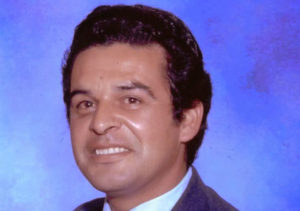
Enrique “Kiki” Camarena, the late Drug Enforcement Administration agent assigned to investigate drug trafficking in Guadalajara, Mexico, in the 1980s, is famous as one of the most heroic DEA agents ever. But he is more well-known in death than in life. His torture-murder in Mexico in 1985 took place at the hands of drug cartel bosses with the complicity of high-level Mexican government officials, law enforcement and, allegedly, the CIA.
At the time, the Reagan administration was secretly training and supplying Central American guerilla fighters, known as the “Contras,” against the leftist Sandinista government in Nicaragua. The U.S. government allegedly granted the cartel bosses free rein to traffic drugs – to the point of using CIA-recruited American pilots to fly cocaine into the United States to sell for cash so the cartel could make donations to buy more weaponry for the Contras.
Camarena, born in Mexicali, Mexico, in 1947, moved with his impoverished family to Calexico, California. He served as a firefighter in Calexico, and with a strong desire for police work, joined the Imperial County Sheriff’s Department, moving up to its narcotics task force. The experience led to his career in the DEA starting in 1975. Assigned to the DEA office in the “narco paradise” of Guadalajara in 1980, Camarena was a convincing undercover officer with his appearance and ability to speak Spanish and barrio “street” language to fit in with the drug underworld. His target was the powerful Guadalajara drug cartel (which later evolved into the Sinaloa cartel).
In the early 1980s, in what he called “Operation Padrino,” Camarena arranged for U.S. agents to seize international bank accounts held by wealthy cartel drug lords. He developed evidence of major marijuana plantations in the Mexican state of Zacatecas, based on informants and overflights in a plane flown by his DEA pilot, Alfredo Zavala Avelar. In November 1984, from his background work, Mexican federal police and the DEA raided enormous pot-growing operations on a ranch in Zacatecas that employed thousands of field hands. The task force confiscated 20 tons of marijuana, burned the crop and made 177 arrests.
The bust cost cartel figure Rafael Caro Quintero about $50 million. Caro Quintero believed his operation had the protection of the Mexican army, and the CIA, since he owned a farm used to train the U.S.-backed Contras. He vowed revenge against Camarena. Meanwhile, a DEA force organized by Camarena seized a large cache of cocaine shipped by cartel boss Miguel Felix Gallardo’s operation to New Mexico and Texas. Gallardo also believed he had CIA and Mexican official protection.
During the fall of 1984, Quintero held meetings with top cartel traffickers Gallardo, Ernesto “Don Neto” Fonseco Carrillo and Ruben Zuno Arce. Also present, thanks to rampant corruption bought by the Guadalajara cartel, were Mexico’s minister of domestic affairs and DFA chief Manuel Bartlett Diaz, plus Mexico’s defense minister, the head of Mexico’s Interpol office and the governor of the state of Jalisco. The agenda was to kidnap Camarena and get him to reveal his informants and other information. Zuno Arce gave the order. Fonseca only intended to scare and release him, but Quintero wanted to kill the DEA man.
On February 7, 1985, Quintero and Gallardo directed their henchmen to kidnap Camarena off a street in Guadalajara. As the agent walked from the U.S. consulate to meet his wife for lunch, they forced him at gunpoint into a car and drove him to a residence used for cartel rendezvous. They bound and blindfolded him, turned on a tape recorder and questioned him, during which he was severely beaten and tortured. The lead interrogator was the crooked head of the secret police in Guadalajara, Sergio Espino Verdin. The cartel men wanted to know what Camarena knew about them, their dealings with Mexican officials and the CIA’s involvement in drug trafficking. The gangsters also brought in and beat up Zavala, Camarena’s pilot. Both men died about two days later, angering Fonseco, who told Quintero not to kill Camarena.
Camarena’s wife reported him missing and Washington launched what would be the largest manhunt in the history of the DEA. The cartel had the two men’s bodies buried, then dug up and relocated to a farm in another state, where Mexican police found them in early March. During his funeral a week later, Camarena’s family interred his ashes in Calexico.
His slaying triggered an international incident. U.S. officials ordered all cars from Mexico at the border searched, effectively closing it. The investigation revealed the CIA connection, leading to bitter clashes between CIA and DEA agents. A federal court in Los Angeles charged 22 defendants in the murders of Camarena and Zavala. Under pressure, Mexican authorities acted, arresting 13 men. Mexican courts convicted Fonseco, Quintero and Espino, and sentenced each to 40 years, although Quintero won early release on a technicality in 2013. U.S. officials are still seeking Quintero to face federal charges. Mexican police arrested Gallardo in 1989, and he received 40 years. A court in Los Angeles found Zuno Arce guilty in the murders in 1990, sentenced him to two life terms in prison, where he died in 2012.
In Camarena’s honor, in 1985 the National Family Partnership started the National Red Ribbon Campaign, a volunteer anti-drug use and education effort that urges youths to recite a pledge to refrain from drugs, and celebrates “Red Ribbon Week” on drug awareness each October.
Camarena’s is featured as a character, played by actor Michael Pena, in a chapter of the Netflix series Narcos: Mexico, about on his actions with the DEA.
Jay Dobyns
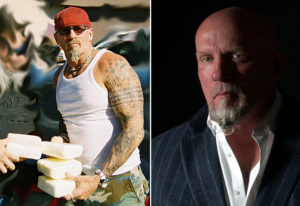
For Jay Dobyns, fitting in with the infamous biker gang the Hells Angels for almost two years meant adhering to his undercover alter ego, Jay “Bird” Davis, to the point of obsession. To maintain his cover, he had to divert his mind away from his wife and kids. And it all would be worth it – at least that’s what he thought at the time.
Dobyns had hit on his best clandestine ruse yet while in Arizona in 2001, after 15 years of service as an undercover special agent with the U.S. Bureau of Alcohol, Tobacco, Firearms and Explosives. While working undercover cases in the late 1980s for the ATF, he’d been injured twice – from a gunshot wound to the back from a suspect in Tucson and when gunrunners hit him with a car during an attempted getaway in Chicago. He took part in investigations of the 1995 Oklahoma City bombing and the 9/11 terrorist attacks. Other undercover roles of his ended in the arrests of a Mexican drug boss and members of the Aryan Brotherhood gang. Altogether, he served in more than 500 undercover operations disguised as a hitman and Mob debt collector. He infiltrated organized crime groups and gangs engaged in drug and arms smuggling.
In 2001, to gather intelligence as “Davis” for the ATF in northern Arizona, Dobyns worked in the Bullhead City area, posing as a gun seller and an enforcer for a nonexistent collections agency. But his operation was interrupted in 2002 with the now-famous riot and shootout among members of the Angels and a competing biker gang, the Mongols, at the Harrah’s casino in nearby Laughlin, Nevada, during the annual River Run motorcycle rally. Two Angels and one Mongol died and dozens of people were injured.
The ATF brass soon redirected him to penetrate the dangerous Hells Angels club. Dobyns certainly had the physical part down with his beard and six-foot, one-inch frame he used as an all-conference football player for the University of Arizona. Later, an Angels member would apply tattoos covering his upper arms.
Dobyns teamed with another ATF agent, two other undercover officers and a pair of paid informants. The idea was to create a fake biker gang with the aid of one of the informants who once served in a motorcycle gang based in Tijuana, Mexico. The gangster informant and Dobyns would run the gang, called the Solo Angeles, promote it as a pro-Hells Angels crew and request to join the Angels as a “nomad” chapter. The ATF named the setup “Operation Black Biscuit.” As a convincer, Dobyns and his fellow agent feigned an execution of a Mongol member, tying up an agent, placing cow’s brains and bloody Mongol clothing on him and taking a photo. Based on the picture, the Angels took the bait and let them hang out and ride with them. They trusted him so much they offered to make him a member of the Angels’ Skull Valley Chapter. He was the first law enforcement officer to infiltrate the Angels. His undercover penetration of the Angels lasted more than 20 months, one of the longest ever for the ATF.
His work ended with 16 arrests from the Angels gang. But the criminal case, amid problems between the ATF and Justice Department lawyers, fell through in federal court. Federal prosecutors blamed the ATF, saying the agency did not reveal evidence from informants. In 2006, the feds dropped racketeering enterprise charges – the most serious — against all but four of 42 Angels charged in the Laughlin riot.
Dobyns’ battle with his own employer, the ATF, soon began. He filed suit in federal court against the agency alleging it did not protect him while he was on duty. He won a $373,000 settlement in 2007. The next year, Dobyns’s wife and two kids barely escaped after someone firebombed the family home in Tucson. The ATF investigated Dobyns himself as a suspect in the arson. Investigators cleared him. In 2014, the year he retired after 27 years with the ATF, he filed another suit, for $17.2 million, saying the ATF failed to safeguard his family amid death threats. A judge awarded him $173,000. During an appeal, the judge voided the monetary judgment, but recommended discipline for ATF personnel and barred seven Justice Department attorneys from the case. He ordered a special master to investigate government actions in the case, and possible misconduct by the feds in the arson investigation. But the judge died of cancer. The special master in a report said that the first case was fair enough and required no further probe into the federal government. A new judge accepted the recommendation.
Dobyns has authored two books, one on his undercover experiences, another on his travails with the ATF. These days, he delivers lectures on his life to audiences at universities and law enforcement associations nationwide.
Feedback or questions? Email blog@themobmuseum.org





